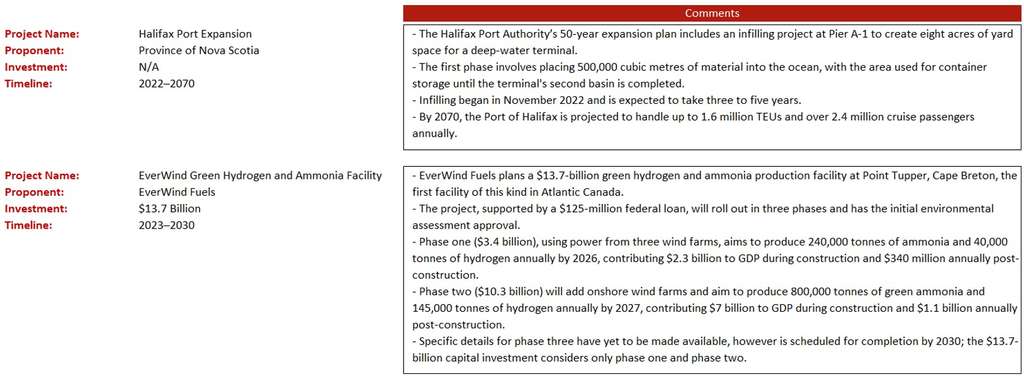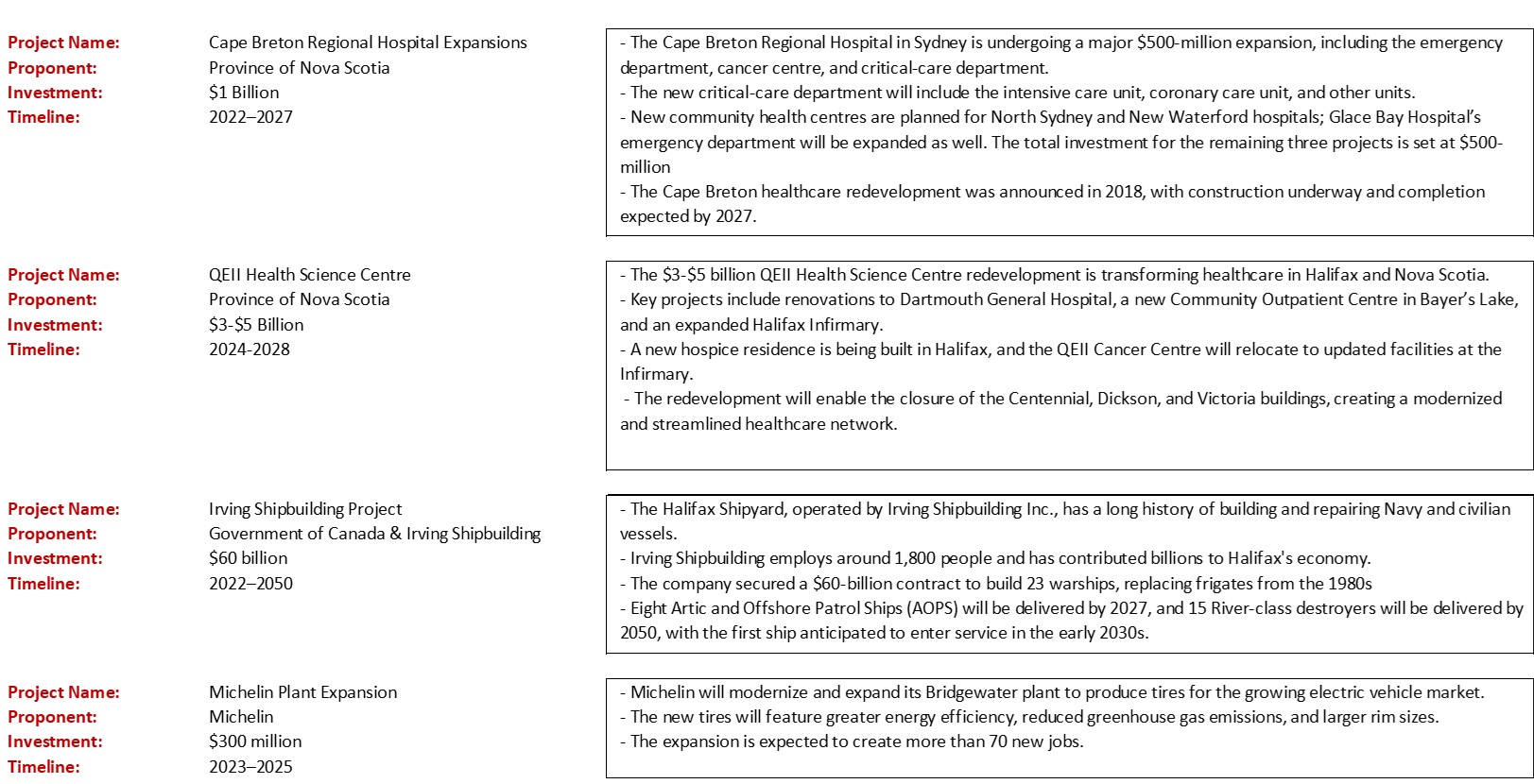Halifax Hotel Market Revitalization
The Nova Scotia lodging market, particularly in Halifax, has experienced rapid growth in the years following the pandemic. With welcoming immigration policies and a perceived lower cost of housing, the province has seen substantial population growth and increased capital investment, fueling lodging demand. In 2024, provincial RevPAR levels are projected to reach 128% of their 2019 benchmark, driven by rising ADR and an enhanced hotel supply.
Major Capital Influx and Hotel Inventory Improvement Support Market Growth
Nova Scotia is experiencing a record population boom after years of limited growth and has set an ambitious goal of reaching 2 million residents by 2060. Thanks to the new facilitated immigration policies, the welcoming environment for refugees, and interprovincial migration (particularly from Ontario), Nova Scotia has gained 111,000 new residents over the past nine years—a remarkable turnaround for a province once facing population decline. This growth is largely driven by the perceived lower cost of housing, which attracts migration, capital, and jobs to the region. As a result, the province now benefits from a significant influx of capital investment, leading to major construction projects and expansions of cities across the province—driving hotel demand growth and new hotel developments.
Nova Scotia experienced steady RevPAR growth from 2015 to 2018 due to economic expansion and an increase in the number of overnight travellers. Despite a slight drop in occupancy in 2018, ADR rose, pushing RevPAR to a record high. In 2019, RevPAR dipped slightly due to a normalization in rates from the significant growth registered in the preceding years. Additionally, two downtown Halifax hotels (Hotel Halifax and Barrington Hotel) were de-flagged from the Delta Hotels brand, which placed further downward pressure on rates that year.
In 2020, Nova Scotia experienced a significant decline in all performance metrics due to the fallout from the COVID-19 pandemic. The establishment of the 'Atlantic Bubble' in July 2020—a travel-restricted zone encompassing Nova Scotia, New Brunswick, Newfoundland & Labrador, and Prince Edward Island—further delayed recovery, as it limited inbound travel from provinces outside the bubble.
Halifax, which accounts for a large part of the Nova Scotian market, follows the same trends as the province. The pandemic losses were slightly more pronounced, but recovery was faster by way of greater ADR increases. The ADR rebound registered in 2022 was bolstered by the ramp-up of new high-end supply such as the Muir Halifax, Autograph Collection Hotels and the Sutton Place Hotel Halifax, as well as renovations of existing products which had opened in Halifax just before the onset of the pandemic.
The near-term outlook for the Nova Scotia market is favourable when considering the various major projects and ongoing hotel supply improvements taking place across the province. Moreover, potential investments in green energy projects—including hydrogen production and wind farms—could bring substantial long-term economic benefits. On the government spending front, the 2024 budget features a $1.6-billion capital plan, exceeding the previous record set in 2023 by $8 million. Key major projects are outlined below:
The major projects outlined above are central to a positive outlook for the Nova Scotian economy. In the travel and accommodation sector, these initiatives also underscore the upcoming hotel room supply shortages around Halifax. For example, the proponent for the QEII Infirmary expansion is considering using hotels to house the workers. Based on our market interviews, the QEII expansion will command 200 to 300 rooms per day for workers during its peak period in August 2026—welcoming roughly 5,000 workers by 2026 and will seek at least one hotel buyout. Based on this, the Halifax market is expected to experience significant compression from the reduction in room inventory, which would allow hoteliers to elevate room rates. This, combined with the ramp-up of new high-quality supply, should drive average rate growth rates higher in the near term. Furthermore, the QEII project is projected to occupy a fixed number of guestrooms on a fixed-term basis, resulting in substantial unaccommodated demand in the Halifax market. While this compression will support higher average rates, it will also limit the market's ability to meet peak-season demand, possibly leaving travellers without accommodations and limiting Halifax’s ability to host city wide events. Consequently, this could create opportunities for the short-term rental market to benefit from the insufficient hotel supply.
Supply Improvement
The quality of hotel supply in Halifax is improving, which in turn has driven significant rate increases across the market. Moreover, market-wide demand has surpassed the pre-pandemic price benchmark, indicating that this is a relatively price-insensitive market—travellers are willing to pay high prices for high-quality products and have accepted the rate increases. However, in the 2024 year-to-date period, rates across the province have begun to normalize, a trend we are seeing across the country in the post-Covid era.
The simultaneous opening of high-end supply induced the high-end demand mentioned above: the opening of the Muir Halifax, Autograph Collection Hotels, in 2021, illustrates this trend well. This property has achieved record-high ADRs and the new supply was quickly absorbed into the market, creating a new tier of product in Halifax. The Sutton Place Hotel Halifax is another luxury hotel that opened in 2020, and has also induced demand thanks to its convention centre location. Currently, these are the only two luxury properties in the market, both of which opened during the pandemic.
Another addition to new supply is the Moxy Halifax Downtown, which opened in 2024 and is a new lifestyle property designed with a trendy vibe, featuring attractive social spaces, weekend DJ sets, and a vibrant bar. This property is aimed at attracting younger travellers while still achieving high rates, reflecting a shift in demand in the Halifax market, which had previously catered to a more traditional client base. Such new players are redefining the city’s hospitality offerings.
In addition to these newcomers, supply is improving with the upcoming renovations of the Westin Nova Scotian (2027), the Barrington Hotel (2025), and the Prince George Hotel Halifax (2025); the Hotel Halifax will also be renovated and rebranded to the Delta by Marriott affiliation following five years of independent operations after losing its flag. These renovations, and the implied reduction of rooms for a certain period, will further increase the compression in the market caused by the QEII Expansion Project workers, and cause growth in demand. Once those renovations are complete, however, it is expected that a higher-quality supply will result in increased ADR in the city.
Airport Expansion
The Halifax Stanfield International Airport is the main access point to the province by air. Its future expansion is therefore critical for the development of the tourism industry in the province. The Halifax Stanfield International Airport Master Plan 2041, which was released in 2021, focuses on the coming growth in passenger numbers and on the development of additional amenities to serve them, such as the expansion of ParkNFly, the construction of a new taxiway, extra gates that can be used peak hours, the addition of more security-check lanes, a luggage claim area, and the addition of retail stores.
The Master Plan also contains an $8.3-million project aimed at providing the infrastructure necessary for facilitating intra-airport connections. Thanks to this initiative, international passengers arriving in Halifax and connecting to a final Canadian destination will be able to get through customs and domestic departures without having to pick up their luggage or pass through security again, shortening the layover duration. This initiative will further result in the addition of one floor at the airport and is expected to bring an increase in passenger numbers through greater flow efficiencies.
The Airport’s goal is to reach 5.2 million passengers per year in 2030; by comparison, in 2024, this number was estimated to reach 4,052,065 passengers. The number of passengers is expected to reach pre-pandemic levels in 2025, as the airport is actively working towards the addition and reinstatement of flights. For instance, Pascan Airlines now offers daily direct flights to Sydney, Nova Scotia, after not having this connection since November 2022 due to the pandemic.
Halifax Convention Centre
The Halifax Convention Centre is the primary conference venue in the area. It opened on December 15, 2017, in Downtown Halifax, replacing the former World Trade and Convention Centre, which could not compete with other cities in the country for major events. The convention centre is part of the $500-million Nova Centre project, which encompasses 1 million square feet of mixed-use space, making it the largest integrated development project in Nova Scotia's history.
In its inaugural year, the Halifax Convention Centre hosted 90 events including tradeshows, conventions and conferences, galas, and other social events, which brought in total 75,000 delegates.
The convention centre hosted the Canada–Korea Conference in September 2021; this was the first in-person international event since the pandemic began. In 2023/24, approximately 140 events took place at the Halifax Convention Centre, with 80,000 delegates participating.
Conclusion
The Nova Scotian hotel market is poised for sustained growth and success, propelled by a forward-looking approach adopted by the province, the business community, and various other stakeholders. Major infrastructure projects, the rise of green businesses, and significant investments are driving population growth, increased tourism, therefore boosting hotel demand and development. Leveraging its strong geographical advantages, new infrastructure, and improved hotel supply, the province is positioning itself as a key destination in Canada.





